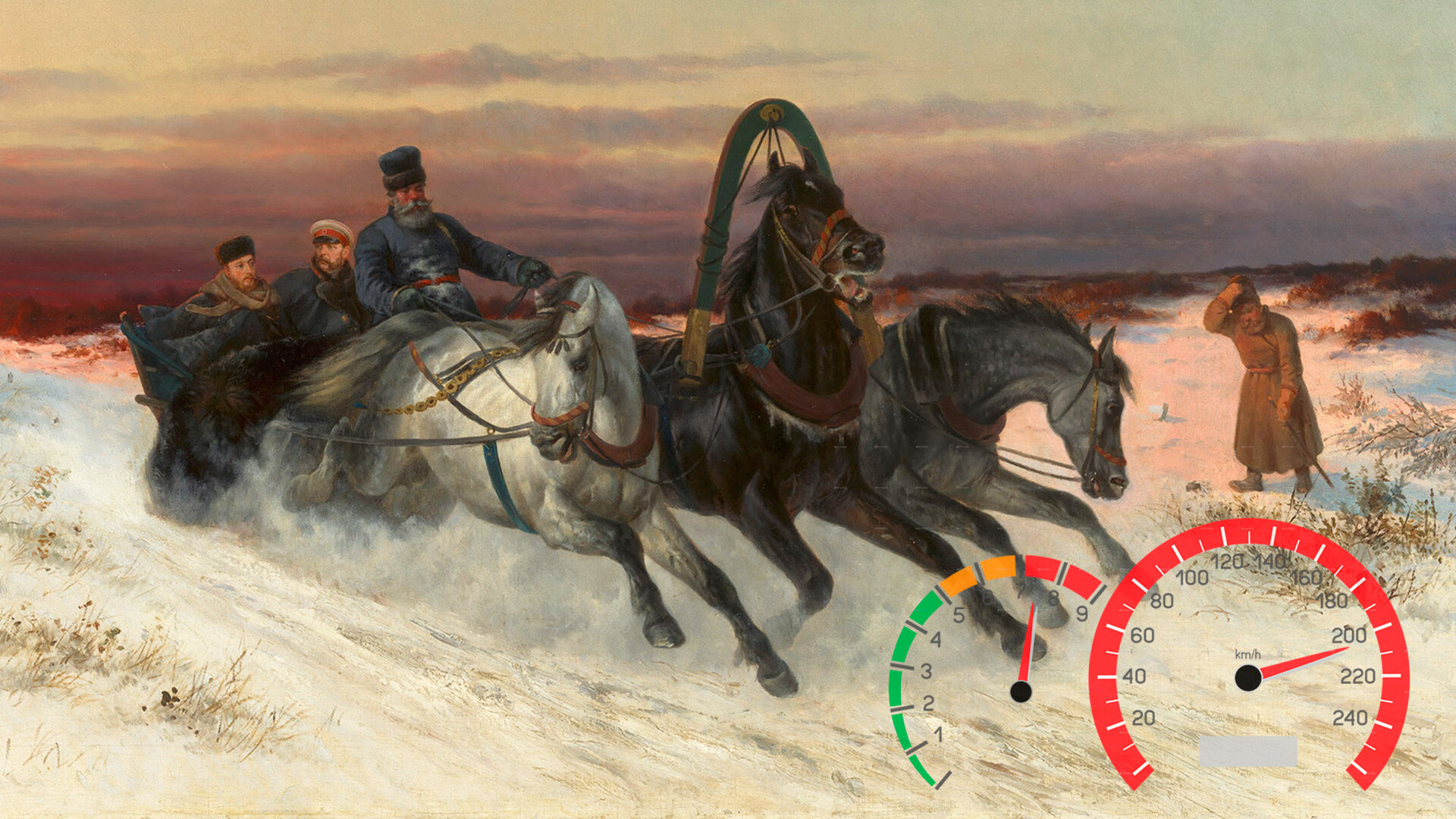
Alexander II, Emperor of Russia (1818-1881) with Edward VII (1840-1910) in a Troika in St. Petersburg
Nikolai SverchkovThe fastest highway of the Russian Empire was called the Siberian Route. Artist Vasily Vereshchagin wrote: "I went twice by courier (by carriage of the military courier service – ed.) to Turkestan, through Siberia, once in summer, once in winter, and, both times, the ride was downright frenzied; it happened to do 400 versts a day." It turns out, the average speed was 17.83 km/h.
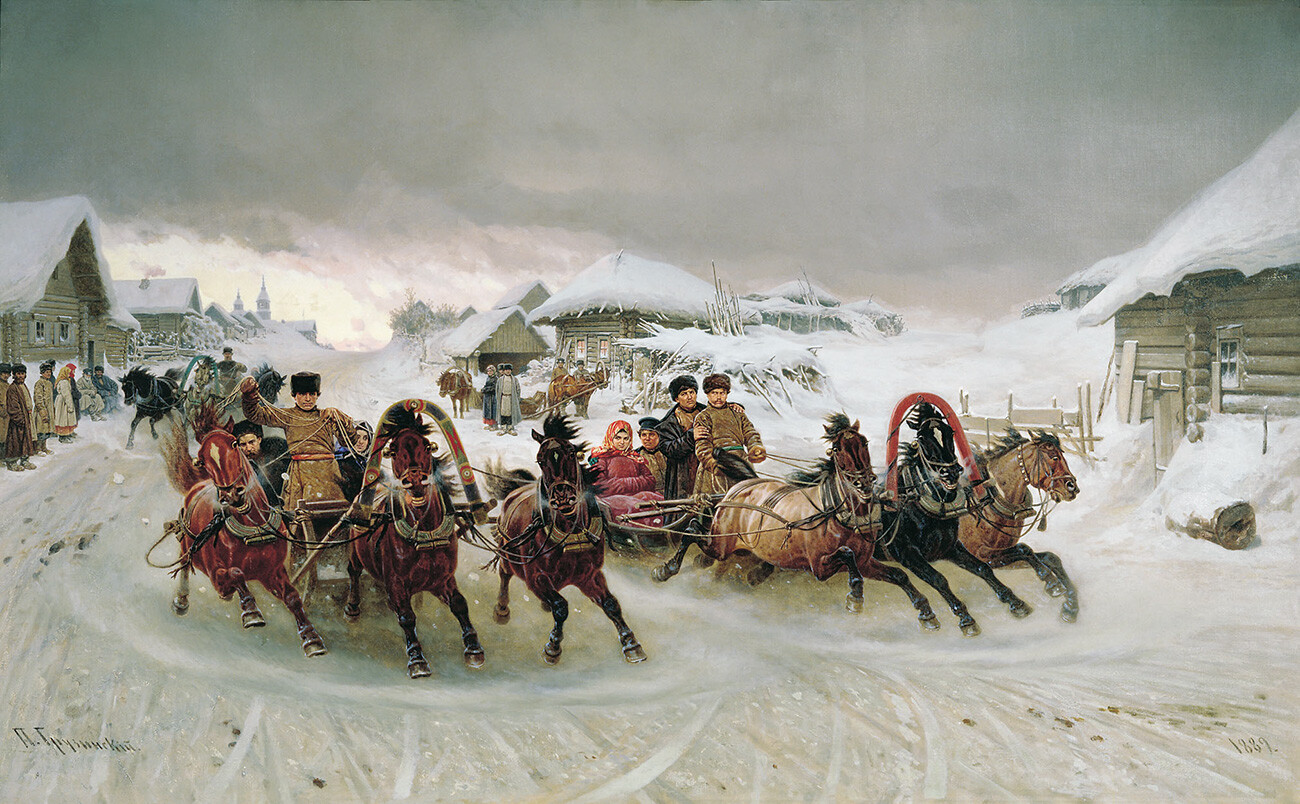
Of course, several stops were made during the day to change horses and take meals, but, in any case, 17 kilometers per hour is excruciatingly slow by today's standards and, in those days, drivers of the Siberian Route were considered “aces of speed”. They would often even make a whole performance of their start. Vereshchagin recalled that the horses were harnessed to the cart, restrained, and when the harness was ready, "people jumped aside and the horses first reared up, then threw themselves forward. It was useless to try to hold them back, it was only necessary to guide them skillfully to prevent them from turning into a ditch, flying off a bridge and so on." From such speeds, even the wheel axles lit up.
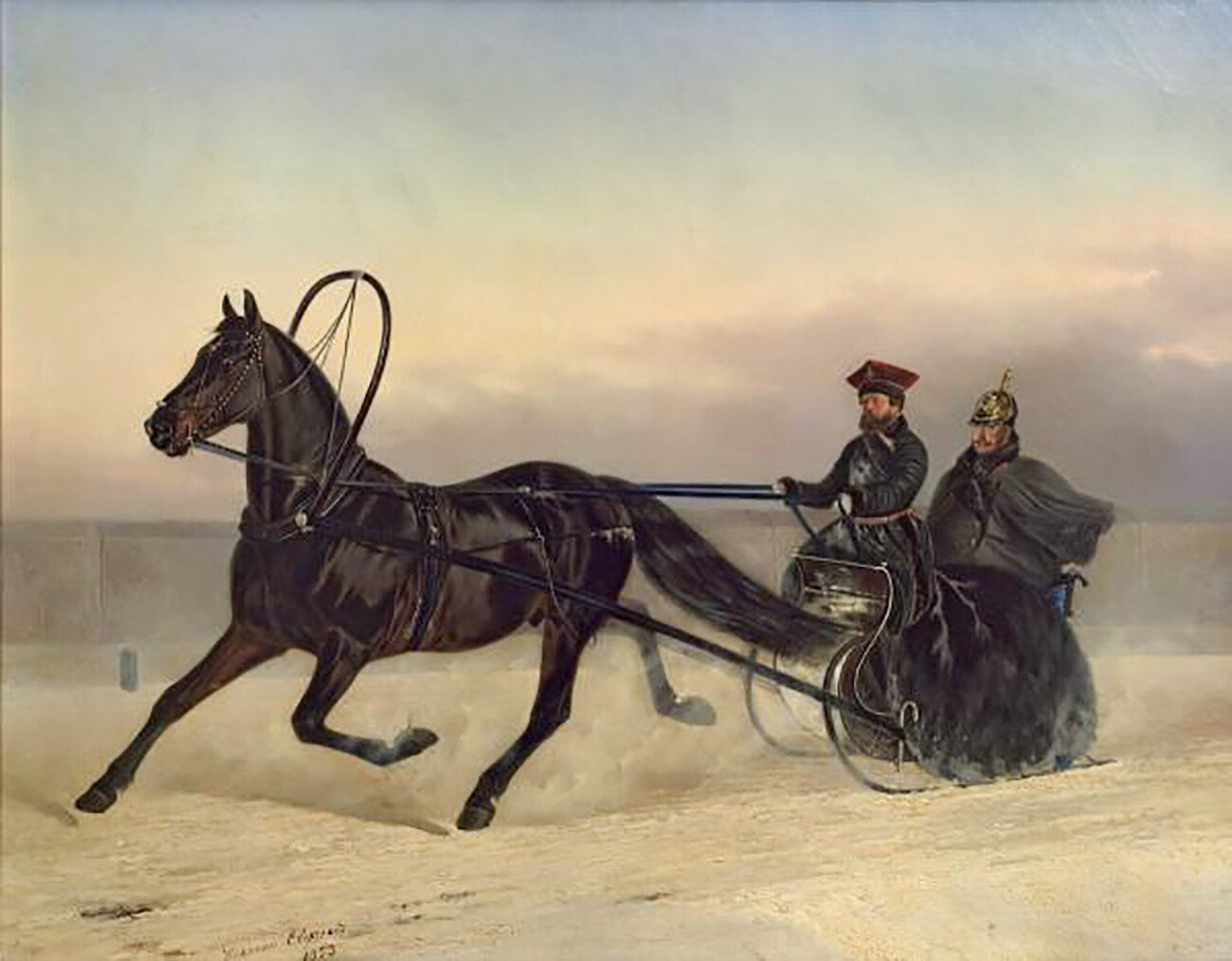
Nicholas I in a sled
Nikolai SverchkovVladimir Nabokov gives similar figures of pre-revolutionary speeds in the comments to ‘Eugene Onegin’. The fastest in the empire were the coachmen and carriages of the emperors. In the 1750s, empress Elizaveta Petrovna had a special carriage-sleigh, on which she traveled from St. Petersburg to Moscow in 48 hours. Twelve horses were harnessed to the carriage, which were changed every few dozen kilometers. The length of the road at that time was about 784 kilometers – that is, Elizaveta Petrovna must have driven at an average speed of 16.3 km/h.
In 1810, Alexander I was noted to have traveled between the capitals in 42 hours (average speed: 18.66 km/h). While, in 1833, Nicholas I managed it in 38 hours (according to Alexander Pushkin's diary). Thus, Nicholas I can be called the fastest Russian emperor, with an average speed of 20.63 km/h. It should be borne in mind that he was driving in December on an icy track – the fastest type of road surface of those times.
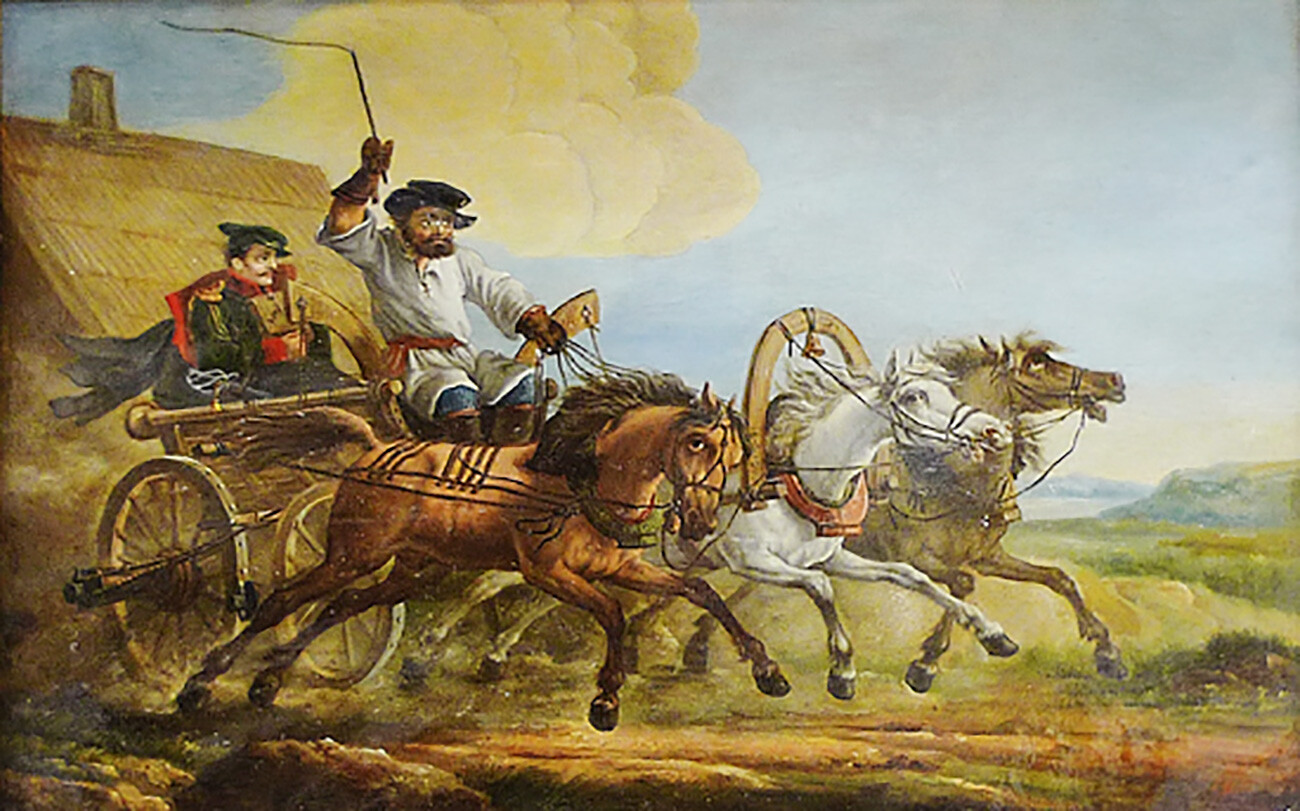
The record speed was described in the diary of the playwright Alexander Ostrovsky, who, in 1856, was driving in the Tver region. "In Emmaus, they laid three beautiful gray horses for us and a coachman sat down, a young man of 25 years old, very handsome. I remarked to him that the girls must love him, but he didn't reply. He drove us with such speed that it took my breath away. <…> We drove 14 versts (approx. 15 kilometers) for three quarters of an hour." Thus, the speed of the carriage was moving about 20 kilometers per hour – almost as fast as the emperor’s! What’s also impressive, however, is this was achieved during summer, on a dry road!
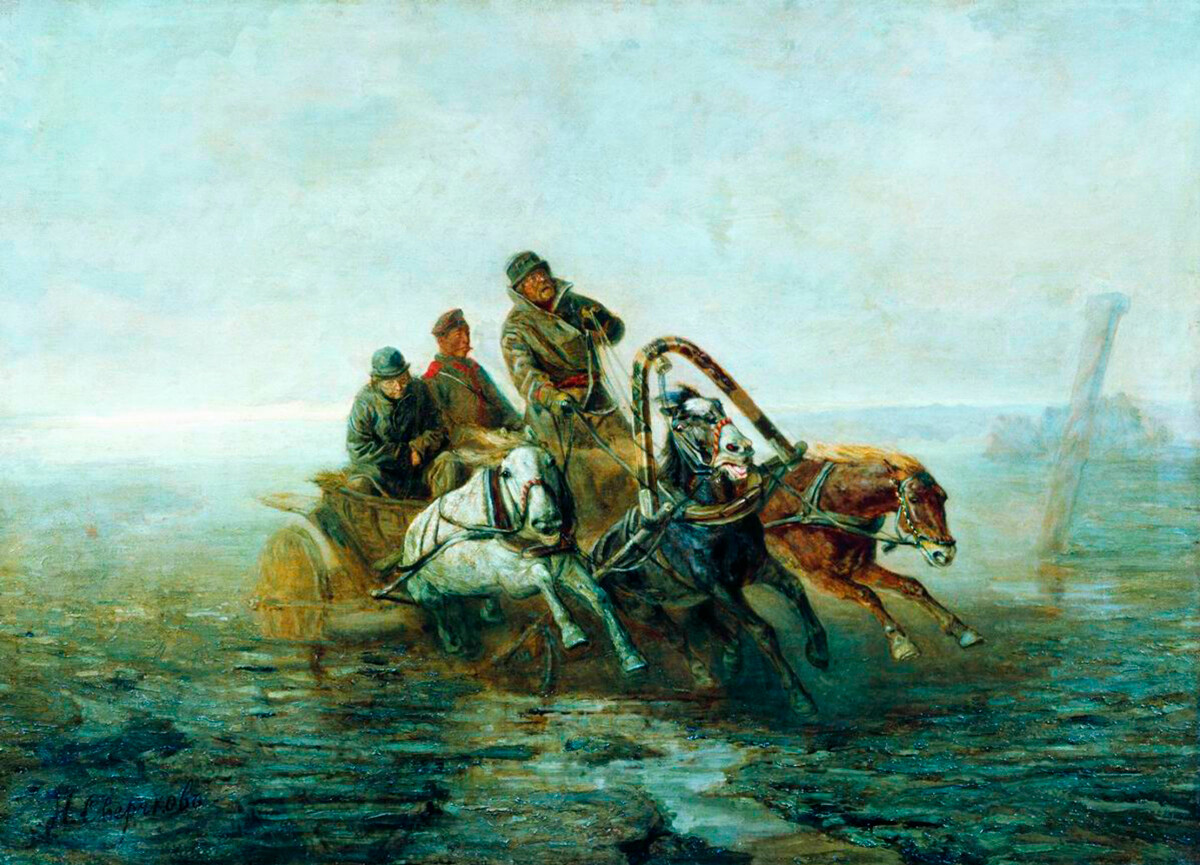
The Great Siberian Route, Nikolai Sverchkov, 1883
Altai State Art MuseumEven the maximum speeds on pre-revolutionary roads were low. Most of the carriages and carriages just barely dragged – especially in the off-season mud or snowfall. Vladimir Nabokov notes: "Winter could sweep up so much snow that the journey ‘along the snowy path’ became no better than through slush and mud." Critic Alexey Wolf wrote that, because of the heavy snowfall, he spent the whole day – from early morning until eight in the evening – on his uncle's troika doing just 42 kilometers between Torzhok and Malinniki in the Tver province. So, by that account, Wolf's troika must have been moving at a speed of only 3 km/h.
READ MORE: What is a Russian troika?
According to historian Vladimir Korshunkov, in 1828, Irkutsk merchant Vladimir Basnin traveled with his comrades to St. Petersburg from Irkutsk, via Tomsk, Tyumen, Yekaterinburg, Kazan and Moscow. The journey took 36 days and 20 hours – from January 26 to March 6 and they drove 5,150 versts, or 5510 kilometers, which would equate to an average speed of 6.23 km/h.
These were the real speeds of movement between cities – so, in fact, all roads were a physical and spiritual test.
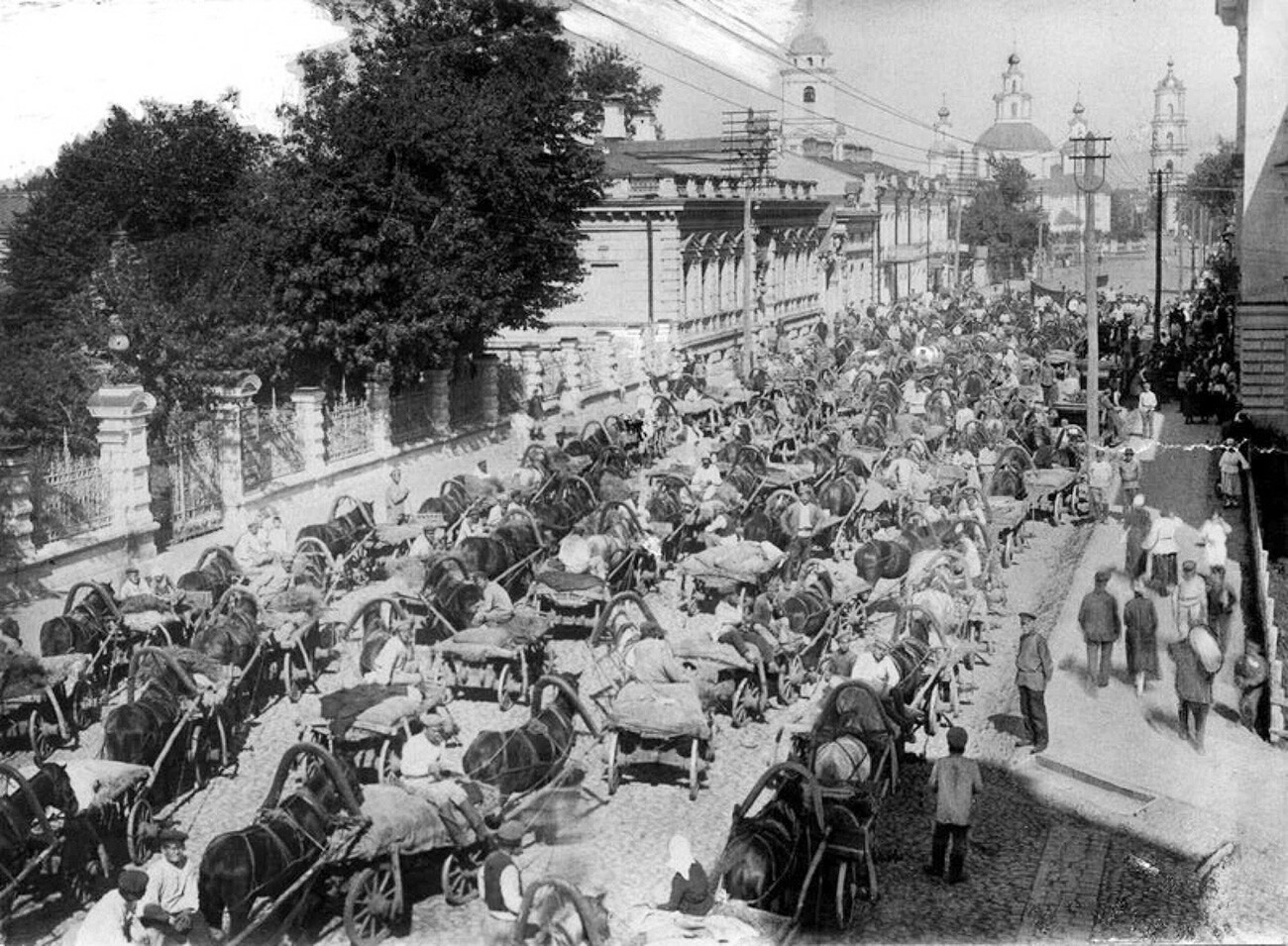
A pre-revolutionary traffic jam
Public domainOf course, big cities and highways in the 19th century and earlier were already familiar with traffic jams, or congestions. A broken cart, a fallen horse, a collision of carriages – all this created a traffic congestion. Narrow streets with many turns and sideways, and roads covered with potholes had to be navigated through slowly and carefully.
Roads were only repaired when authorities and reigning persons were passing. Moscow artist Praskovya Orlova (1815-1900) recalled that, in 1838, she was traveling to Staraya Russa shortly after Emperor Nicholas I had left St. Petersburg on the same road: "the highway was fixed like a parquet."
READ MORE: Road rage in Old Russia
During the passage of the tsars and their family members in Russia, traffic on the roads was virtually paralyzed! But the road blockings in Tsarist Russia were different than they are now – the problem was the lack of motive power. Mikhail Dmitriev recalled that when heir Alexander Nikolaevich traveled to Russia in 1837 and Dmitriev himself was traveling to his estate, all the horses from the postal stations were gathered in the district for the carriages of the heir himself, his guards and retinue: "The stations were empty for three weeks," Dmitriev wrote. Historian Natalia Gorskaya reports exact figures about the heir's passage through the Smolensk province: at least 1,140 postal and 540 spare horses were required and only 400 horses were found at all stations of the province – it was necessary to collect the remaining horses from peasants and landowners.
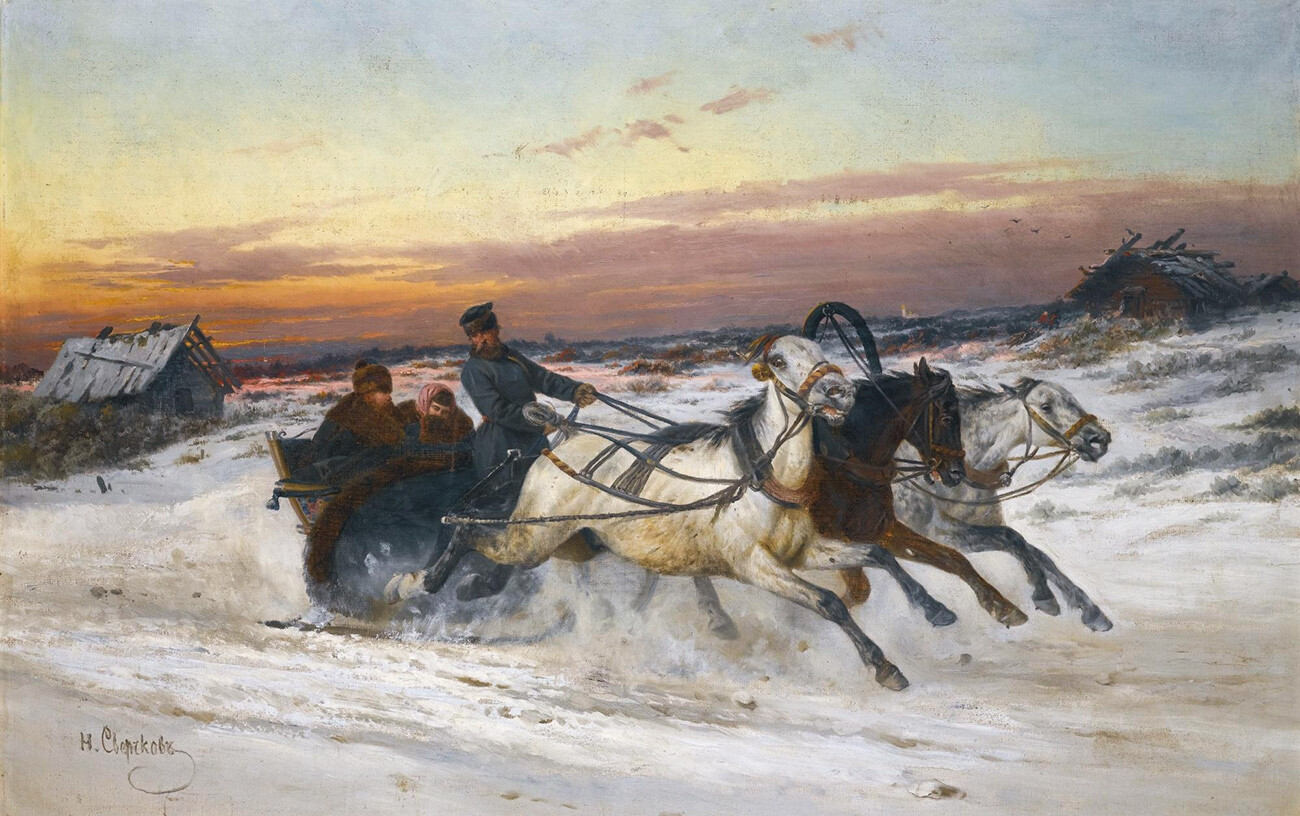
A postal coach on a winter road
Nikolai SverchkovIn September 1856, official Dmitry Obolensky (1822-1881) reported that all horses from the stations of all provinces between Moscow and Warsaw were requested for the passage of the empress dowager. All travelers traveling by post carriages had to stay at stations, in villages and cities. Peasants were torn away from fieldwork – to fix roads and postal stations and service the passage. "How to estimate this loss of individuals and what should such a trip from Moscow to Warsaw cost?" Obolensky complained.
Horses often died after such passes – the drivers were instructed not to spare the horses. In 1858, after Alexander Nikolaevich rode through the Smolensk region (already as emperor), as many as 164 horses fell.
If using any of Russia Beyond's content, partly or in full, always provide an active hyperlink to the original material.
Subscribe
to our newsletter!
Get the week's best stories straight to your inbox